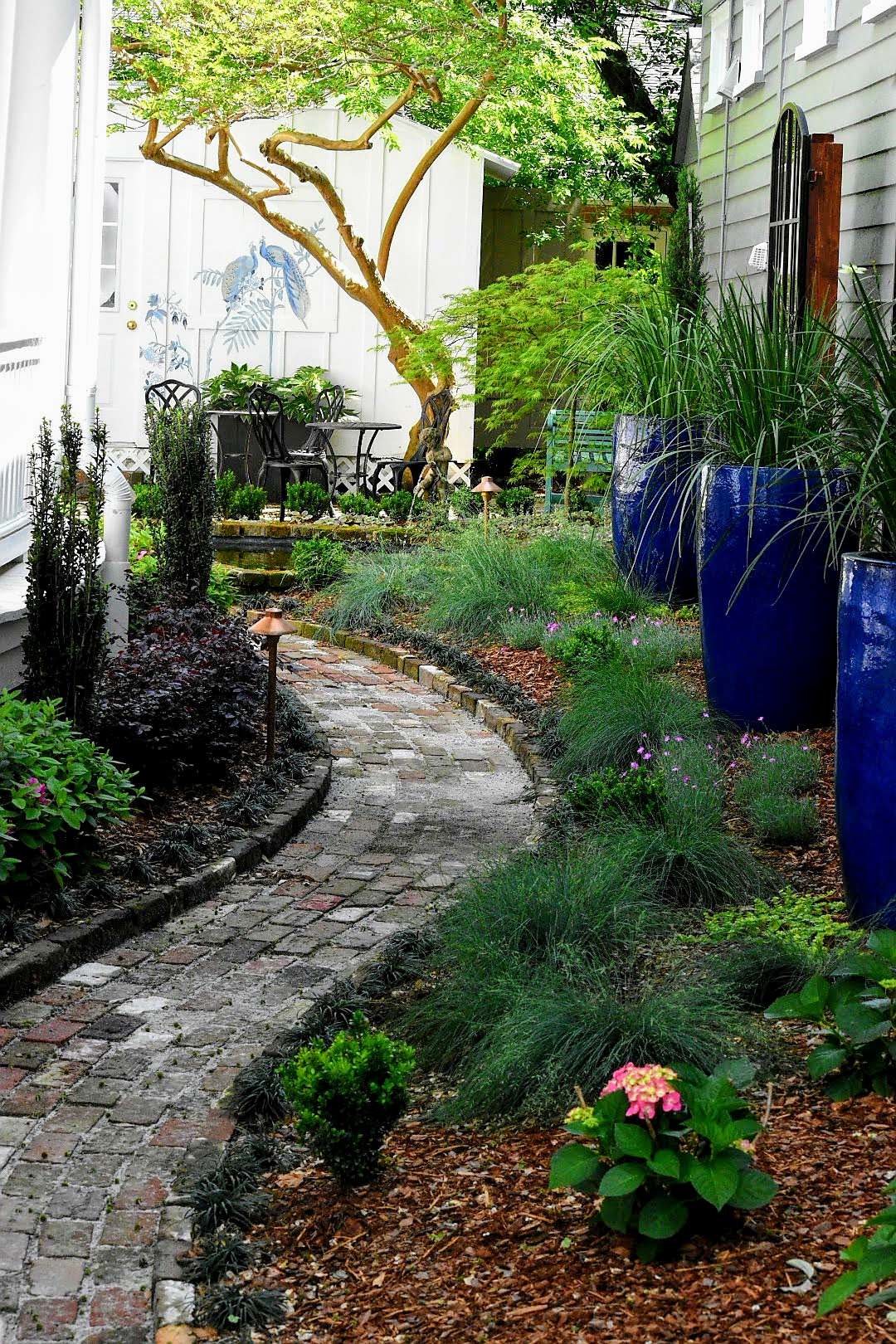Relied On Landscape Designer for Customized and Artistic Yard Designs
Wiki Article
The Role of Yard Style in Promoting Sustainability and Biodiversity
Yard design is significantly acknowledged for its potential to promote sustainability and enhance biodiversity within city and rural landscapes. By focusing on native plant varieties and employing water preservation techniques, developers can create settings that not just flourish but likewise call for marginal chemical intervention. Including elements that sustain wildlife habitats is crucial in maintaining environmental balance. As neighborhoods start to embrace these methods, the effects for both individual and collective ecological stewardship come to be profound. What are the particular methods that can properly bridge the space between aesthetic allure and ecological responsibility?Relevance of Indigenous Plants
Stressing making use of native plants in garden design is important for advertising eco-friendly equilibrium and sustainability. Native plants are those that naturally take place in a details area and have actually adjusted to the regional climate, soil, and wild animals. Their unification right into yards supports regional communities by offering habitats and food resources for indigenous pollinators, birds, and other wildlife.
Water Conservation Techniques

Furthermore, carrying out rain gardens can capture and filter stormwater runoff, advertising groundwater recharge while decreasing disintegration - garden design near Daniel Island South Carolina. These yards utilize native plants that prosper in damp problems, effectively handling excess water while developing varied environments
Moreover, employing mulch in yard beds assists preserve dirt moisture, decreasing evaporation and the regularity of watering (Landscape Designer). Organic composts, such as timber chips or straw, additionally boost dirt wellness over time
Another efficient method is making use of permeable paving products in pathways and outdoor patios, enabling rain to penetrate the ground as opposed to running off. This promotes moisture retention and decreases the demand for watering.
Finally, setting up a rain harvesting system can dramatically contribute to water conservation initiatives. Gathering and storing rainwater for garden usage encourages sustainable practices and lowers dependence on community water resources. By integrating these techniques, garden designs can effectively advertise water preservation while supporting ecological wellness.
Minimizing Chemical Usage
While many garden enthusiasts seek lively and healthy plants, reducing chemical use is vital for fostering a sustainable ecosystem. The dependence on synthetic plant foods and pesticides can result in dirt destruction, water contamination, and a decrease in useful insect populaces. By embracing natural horticulture techniques, garden enthusiasts can improve the health of their landscapes while advertising biodiversity.One effective strategy is to use garden compost and natural amendments, which enhance the dirt naturally and enhance its framework. These methods not just improve plant health but additionally decrease the demand for chemical fertilizers. Implementing incorporated pest management (IPM) techniques better decreases chemical inputs by urging natural predators, such as ladybugs and parasitic wasps, to manage pest populaces.

Producing Wildlife Environments
Creating dynamic wildlife habitats within yards not only boosts biodiversity yet likewise enhances lasting gardening methods intended at decreasing chemical usage. By incorporating indigenous plants, gardeners can offer crucial sources such as food and sanctuary for numerous species, consisting of birds, insects, and little creatures. Indigenous plants are well-adapted to local problems, needing less water and less chemical inputs, hence lining up with sustainability objectives.The design of these environments can consist of varied layers of plants, such as trees, bushes, and ground cover, which raises structural intricacy and offers different particular niches for wildlife (landscape designer near Larson South Carolina). Furthermore, features like water sources, such as small ponds or birdbaths, can draw in and sustain a broader variety of types
Maintaining a naturalistic strategy, which might consist of leaving some areas wild or uninterrupted, permits the all-natural processes of environments to flourish. This technique urges the presence of valuable pests and pollinators, which play an important role in the health of both gardens and surrounding environments. In general, producing wild animals habitats is an essential facet of lasting garden design, fostering environmental balance and strength while boosting the elegance and functionality of outdoor spaces.
Community Engagement in Horticulture
Community interaction in horticulture cultivates a feeling of belonging and cumulative responsibility, changing individual gardening efforts into shared campaigns that benefit the entire neighborhood. By entailing area participants in gardening jobs, we can cultivate not just plants yet likewise relationships and social networks. Neighborhood gardens act as vital spaces for education, where individuals Full Article of every ages can find out about sustainable methods, biodiversity, and ecological stewardship.Collaborative gardening initiatives, such as community yards, advertise the exchange of knowledge and sources, guaranteeing that all participants can add and benefit. This inclusivity boosts area resilience, as participants function with each other to get over obstacles such as food insecurity and environmental degradation. Additionally, community gardens can work as systems for social expression, enabling people to share their heritage via diverse planting and gardening methods.
Moreover, engaging the neighborhood in horticulture initiatives can cause increased understanding of local ecological communities and the importance of biodiversity. By functioning jointly to style and maintain these spaces, citizens cultivate a common dedication to sustainability, producing a lasting effect on both the setting and community communication. Inevitably, area interaction in gardening is an effective tool for advertising environmental stewardship and enhancing the top quality of life within communities.
Verdict
Finally, calculated garden style significantly adds to sustainability and biodiversity (Landscape Designer). By emphasizing making use of indigenous plants, executing water conservation strategies, and reducing chemical inputs, yards can successfully sustain regional communities. In addition, the creation of wildlife habitats and fostering neighborhood involvement better improve ecological stewardship. Jointly, these methods not only enhance the elegance of rooms however also promote ecological equilibrium, making garden design a crucial component in the search of a lasting future.Report this wiki page